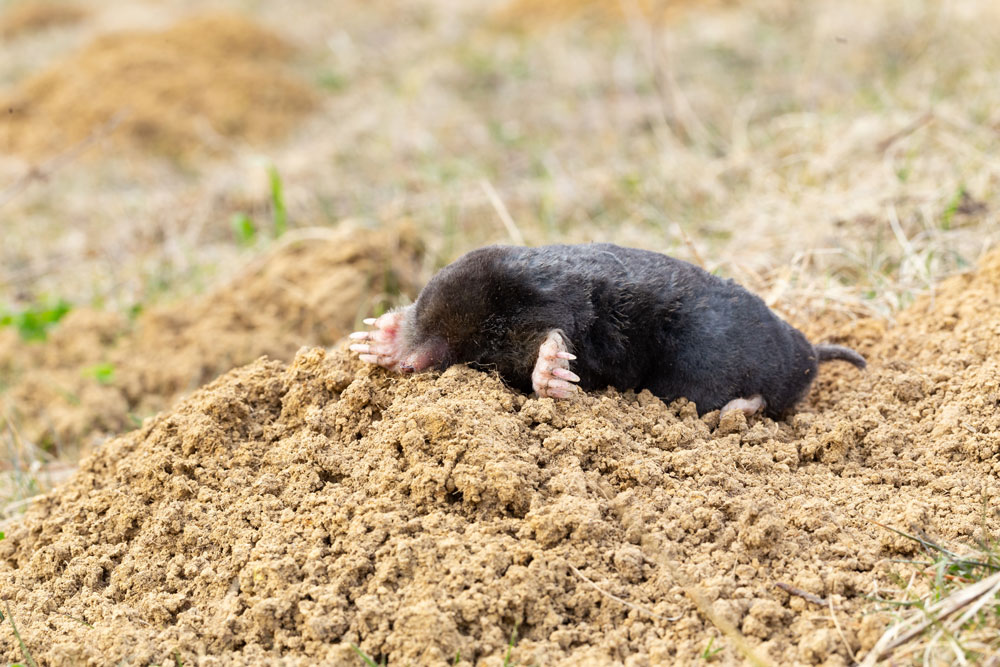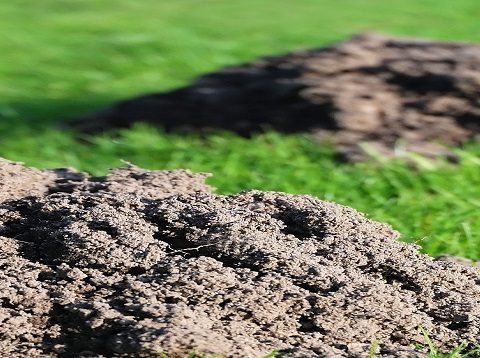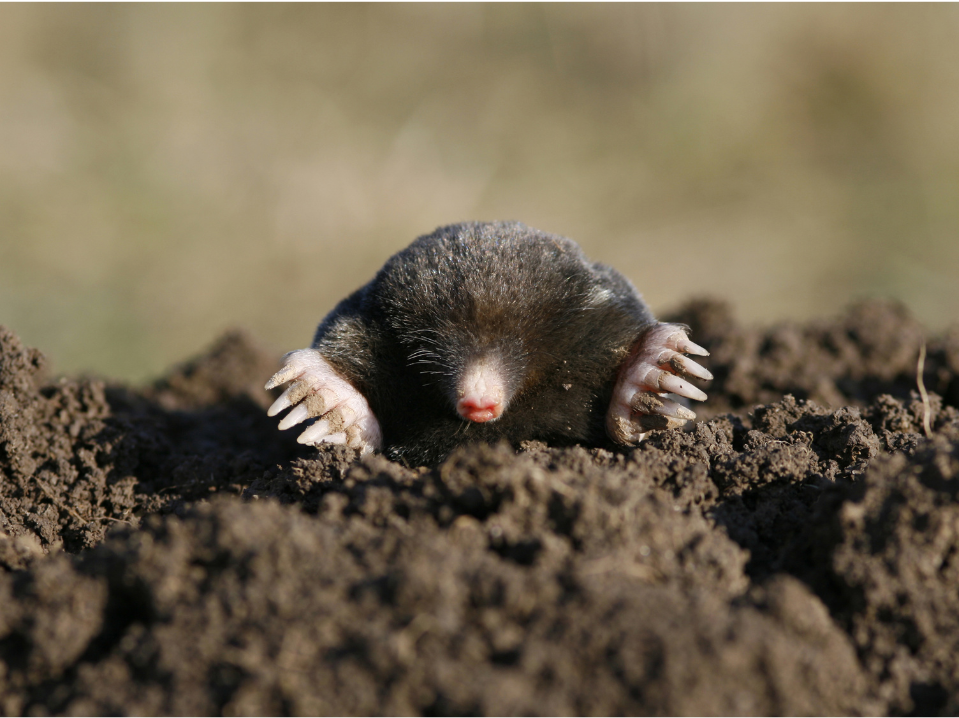
Sites of Scientific Interest Damaged by Squirrels

Wasp, Bee and Hornet Identification Help
Mole Removal Lancashire
Wallace Pest Control
Mole Removal Lancashire
Mole Control Lancashire
Traps, Turf, and Tradition: Why Moles Are Still Making a Mess
Moles have been burrowing beneath British soil since around 8,000 years ago, shortly after they made their way to the British Isles at the end of the last Ice Age. Even the Romans understood the nuisance they could cause, and early records suggest they used buried amphorae (clay jars) beneath active mole tunnels. The idea was simple, as the mole travelled at speed through the run, it would drop into the jar and become trapped, unable to climb back out thanks to the smooth interior surface.
Fast-forward a few centuries, and moles found themselves a new enemy: the perfectly manicured lawn. What began as a defensive feature, keeping grass short around castles to spot sneaky invaders, gradually became a symbol of wealth and order. By the Georgian and Victorian periods, lawns were in fashion, and moles were the new invaders threatening their pristine appearance.
Today, that battle continues. Whether you're managing a country garden, farm, or paddock (and let’s not even begin to dwell on the cost of vet bills for a horse with an injured leg from stumbling into a mole tunnel), mole activity can cause serious disruption. Just one mole can push up dozens of hills in a matter of days, wrecking lawns, disturbing root systems, and making the ground uneven and unstable.
That’s where we come in. We use traditional, humane trapping methods, selected based on your soil conditions and site layout. No poisons, no gassing, and no guesswork, just proper mole control carried out by professionals who know exactly what they’re looking for.
Talk to us about Mole control
Treatment Process: How We Get Rid of Moles
Mole control requires patience, observation, and solid technique. We use traditional trapping methods suited to your site and soil, with traps placed in precise locations based on mole behaviour, not guesswork.
Visit 1: Inspection & Trap Setup
- Site Survey: We assess the layout of molehills to determine the most active areas and feeding grounds.
- Tunnel Probing: Using a simple, time-tested tool, we locate active runs where moles are currently travelling.
- Trap Selection & Placement: Depending on soil conditions, we use Putange, Talpex, or Half Barrel traps and place them in intercepting tunnels. Each trap is marked for easy identification and checked for safety and stability.
- Securing & Marking: Traps are anchored using wire pegs and clearly marked with orange stakes to ensure they remain undisturbed by wildlife or weather.

Treatment Process: How We Get Rid of Moles
Mole control requires patience, observation, and solid technique. We use traditional trapping methods suited to your site and soil, with traps placed in precise locations based on mole behaviour, not guesswork.
Visit 1: Inspection & Trap Setup
- Site Survey: We assess the layout of molehills to determine the most active areas and feeding grounds.
- Tunnel Probing: Using a simple, time-tested tool, we locate active runs where moles are currently travelling.
- Trap Selection & Placement: Depending on soil conditions, we use Putange, Talpex, or Half Barrel traps and place them in intercepting tunnels. Each trap is marked for easy identification and checked for safety and stability.
- Securing & Marking: Traps are anchored using wire pegs and clearly marked with orange stakes to ensure they remain undisturbed by wildlife or weather.
Visit 2: Monitoring & Adjustment
- All traps are checked, and any moles caught are removed from the site.
- If activity continues, we reassess mole activity, relocate traps where needed, and may place additional traps in newly active areas.
- The site is carefully reviewed to adapt the strategy based on soil changes, fresh molehills, and environmental conditions.
Mole Control Pricing
- £120: Includes two visits (initial trap setup and follow-up check/removal)
- £60 per additional visit: Only charged if further mole activity requires it
No upselling, no per-trap charges—just straight-talking pest control with a traditional, effective approach.

Preparing for Your Mole Control Visit
To give your mole control treatment the best chance of success, here’s how you can prepare ahead of your technician’s visit:
Avoid Cutting the Grass
- Please do not mow the lawn within 48 hours before our visit.
- Freshly cut grass can collapse shallow tunnels and alter the mole’s regular pathways, causing them to divert their movements and avoid our carefully placed traps.
- A recently mown lawn also removes visual clues we rely on to read mole activity accurately.
Clear Access to the Treatment Area
- Remove any garden furniture, toys, tools, or loose debris from the lawn or affected areas to give the technician full access to molehills and active runs.
- This ensures smooth trap placement and reduces disturbance to the site.
Let Us Know About Underground Hazards
- If you’re aware of buried cables, pipes, soakaways, or irrigation systems, let us know before or during the visit.
- It helps us avoid causing unintentional damage when probing for tunnels or placing traps.
Supervise Children and Pets
- While traps are in place, children and pets should always be supervised in the garden.
- They must not enter the immediate area around trap sites—for their safety and to prevent disruption.
- Trampling near the traps can collapse tunnels, which not only reduces the effectiveness of the traps but may also cause the mole to block or avoid them entirely.
Report What You’ve Noticed
Let your technician know if:
- The molehills started appearing recently or have been ongoing for a while
- Certain areas seem more active than others
- You’ve seen a pattern (e.g. near trees, borders, or after rain)
The more we know, the better we can plan your control strategy.
Post-Treatment Guidelines
Once your mole control treatment has been carried out, there’s very little you need to do, but here’s what to keep in mind going forward:
There’s Not Much You Can Do to Prevent Moles
We’re often asked about mole deterrents: sonic spikes, planting certain flowers, or scattering household remedies. Truthfully? Most don’t work, and many just waste time and money.
The good news is that moles are highly territorial. Once we’ve removed the resident mole, it’s unlikely another will move in immediately. In most cases, you won’t see further activity until the next breeding season, when juveniles begin dispersing in search of their own territory.
Watch Out for Worm-Rich Areas
Moles don’t dig for the sake of it, they’re expert hunters, and their main food source is earthworms. Areas like compost heaps, damp borders, and rich organic soil can sometimes draw them in. If you’ve got a particularly active compost heap near the lawn, it may be worth keeping an eye on that area for early signs.
In short, you don’t need to stress. Mole problems often seem worse than they are, and once the job is done, you can usually expect long periods of peace and undisturbed turf.

FAQs: Mole Removal

Mole Control Treatment
Wallace Pest Control is a long-time member of the Guild of British Molecatchers.
This is one of the only organisations providing nationally recognised training and certification for traditional mole control methods. The guild aims to promote ethical and environmentally sustainable mole control methods.
This benefits the nation as we support our farmers.
Moles are not simply an unsightly inconvenience; they can be a death trap for livestock due to shallow tunnels near the surface causing serious injury.
Moles also contaminate grassland for feeding livestock through soilborne bacteria such as listeria.
Related Blogs
Ready to Sort Out Your Mole Problem?
If you have a problem with moles and need professional treatment, contact us below or call us on 07496 680879, and our experienced, friendly team will offer advice and provide an effective solution.




